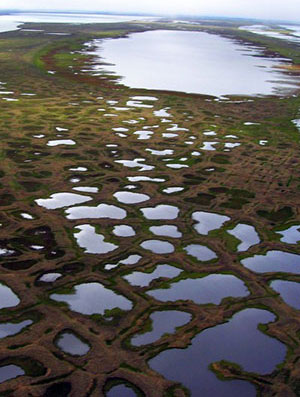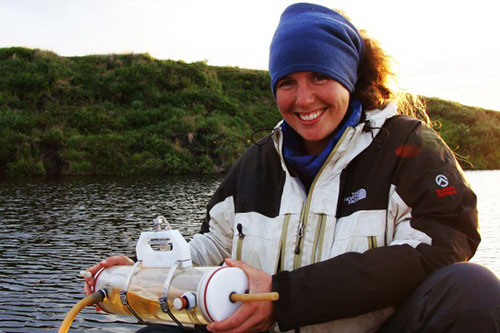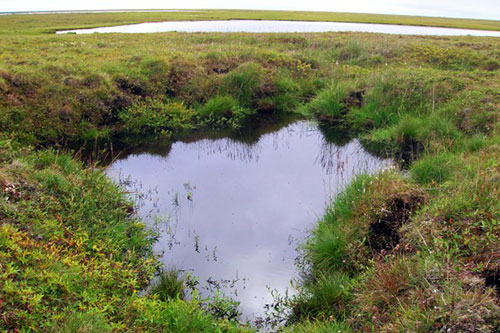
Study: Climate-cooling arctic lakes soak up greenhouse gasesBy MARMIAN GRIMES
July 17, 2014
Countering a widely held view that thawing permafrost accelerates atmospheric warming, a University of Alaska Fairbanks' study published this week in the scientific journal Nature suggests arctic thermokarst lakes are “net climate coolers” when observed over longer, millennial, time scales. “Until now, we’ve only thought of thermokarst lakes as positive contributors to climate warming,” says lead researcher Katey Walter Anthony, associate research professor at the UAF Institute of Northern Engineering. “It is true that they do warm climate by strong methane emissions when they first form, but on a longer-term scale, they switch to become climate coolers because they ultimately soak up more carbon from the atmosphere than they ever release.” Found in the Arctic and cold mountain regions, thermokarst lakes occur as permafrost thaws and creates surface depressions that fill with melted fresh water, converting what was previously frozen land into lakes. Researchers observed that roughly 5,000 years ago, thermokarst lakes in ice-rich regions of northern Siberia and Alaska began cooling, instead of warming the atmosphere. “While methane and carbon dioxide emissions following thaw lead to immediate radiative warming,” the authors write, “carbon uptake in peat-rich sediments occurs over millennial time scales.” Using published data from the circumpolar arctic, their own new field observations of Siberian permafrost and thermokarsts, radiocarbon dating, atmospheric modeling, and spatial analyses, the research team studied how thawing permafrost is affecting climate change and greenhouse gas emissions. Researchers found that “thermokarst basins switched from a net radiative warming to a net cooling climate effect about 5,000 years ago,” according to their article, published online today. They found that high rates of carbon accumulation in lake sediments were stimulated by several factors, including “thermokarst erosion and deposition of terrestrial organic matter, […] nutrient release from thawing permafrost that stimulated lake productivity, and by slow decomposition in cold, anoxic lake bottoms.”
Katey Walter Anthony, associate research professor at UAF, collects data samples from an arctic thermokarst lake.
The study also revealed another major factor of this process: Researchers found that when the lakes drain, previously thawed organic-rich lake sediments refreeze. The new permafrost formation then stores a large amount of carbon processed in and under thermokarst lakes, as well as the peat that formed after lake drainage. Researchers note that the new carbon storage is not forever, since future warming will likely start rethawing some of the permafrost and release some of the carbon in it via microbial decomposition.
This international collaboration has received funding or support from the Alfred Wegener Institute, National Science Foundation, University of Alaska Fairbanks and U.S. Geological Survey. It also included researchers from the Far-East Branch, Russian Academy of Sciences; University of Minnesota; University of Florida; Max Planck Institute for Terrestrial Microbiology; and University of New Hampshire.
This column is provided as a service by the UAF Institute of Arctic Biology.
|
|||


